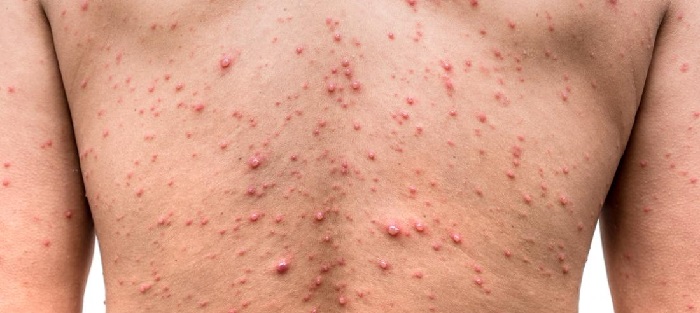What is Chickenpox? What are the symptoms, causes and treatments of Chickenpox disease in children.
Chickenpox; The first sign of chickenpox is usually a few of the characteristic pimples on the body and face. These pox are raised up like ordinary small pimples, but some of them have tiny, yellow water blisters on top. The base of the pimple and the skin areund it are reddened. The delicate blister head breaks within a few hours and dries into a crust. When a doctor is trying to make the diagnosis, he searches among all the crusted pimples to find a fresh one that still has the blister. New pox continue to appear for 3 or 4 days.
An older child or adult may feel sick and have headache the day before the pox appear, but a small child doesn’t notice these symptoms. The fever is usually slight at the beginning, but may go higher the next day or two. Some children never feel sick, never have a temperature of more than 101°F. Others feel quite sick and have high fever. The pox usually itch.

You should call a physician to diagnose and treat your child if he has a rash, certainly if he has a fever or feels sick. (Chickenpox, for instance, can be confused with smallpox and other diseases.) The child is usually kept in bed as long as new pox are appearing. The itching can be relieved by placing him in a warm starch or soda bath for 10 minutes 2 or 3 times a day. Use a starch that dissolves in water, or bicarbonate of soda (1 cupful for a small tub, 2 for a large one). Do not rub the scabs off. The only common complication is boils, which come from infecting the pox by scratching. Wash his hands with soap 3 times a day, and keep his fingernails very short.
Chickenpox usually develops between 11 and 19 days after exposure. The usual rule is to let a child out and back to school a week after the disease began, or 2 days after new pox have stopped appearing. The dried scabs are not contagious and should not be a reason for keeping the child quarantined.
However, some schools insist that he stay away until all the scabs have fallen off.